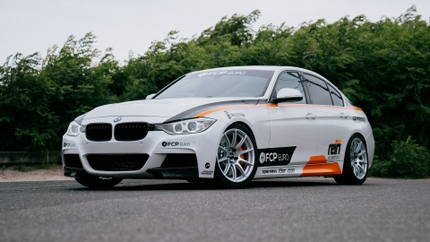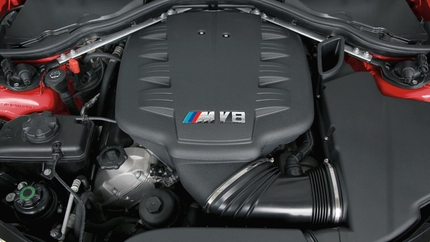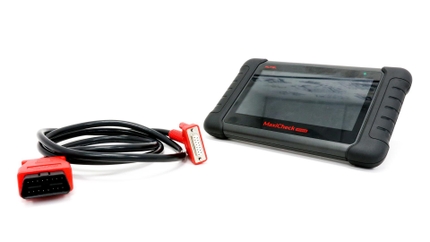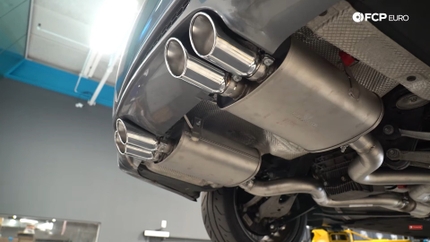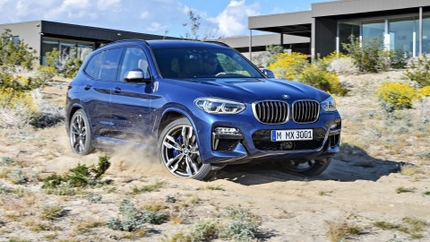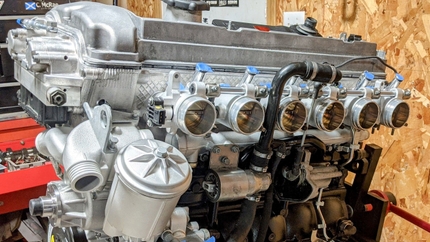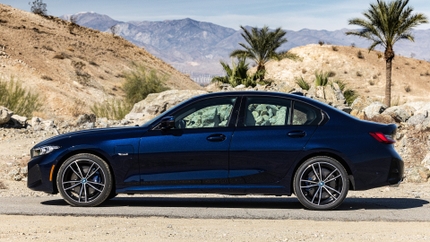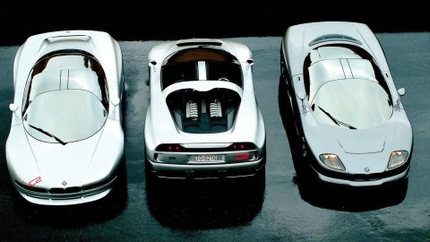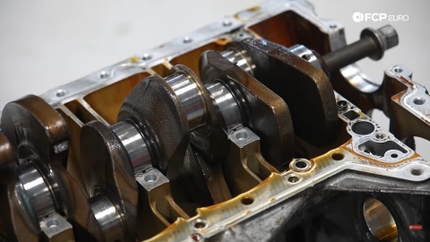This might come as a surprise to some, but there was a time that BMW and McLaren USA collaborated to campaign a lightweight, 600-plus horsepower E21 320i Turbo, taking the challenge to the competitors in IMSA's Group 5 class.
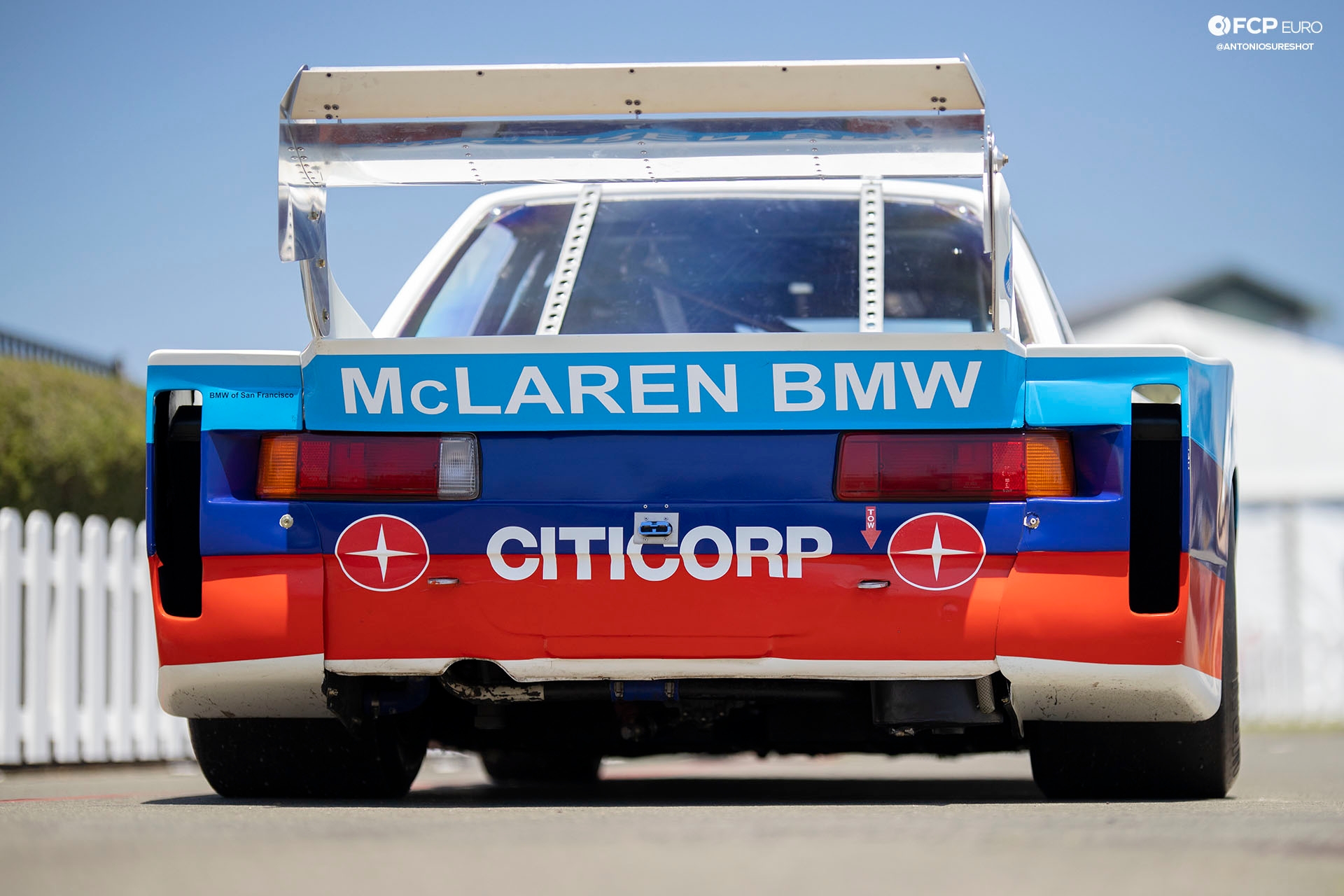
Formula 1 racing embodies the pinnacle of automotive technology, where many innovations and ideas are proven before trickling down to production cars. However, this wasn’t always the case, as BMW raced its first generation 3-series chassis, the E21, in IMSA competition in 1977. While competing with this new platform was not a secret, its ulterior purpose of developing the new turbocharged M12 engine with McLaren Engines that would later be employed in Formula racing certainly was.
BMW E21 vs. Porsche 935
BMW Motorsport and McLaren Engine built a total of five 320i racecars to compete in the IMSA Group 5 category in the USA. The first two E21 racecars debuted in 1977 and went wheel-to-wheel against Porsche’s quick and powerful 935. The Group 5 competition proved fierce, to say the least, and BMW had its share of growing pains during that first year in competition. The factory BMW Motorsport team needed to be even more competitive.
Three’s a Charm
For the 1978 race season, BMW cut nearly 300 pounds from the E21 you see here, chassis #003, making it the lightest of the five that BMW campaigned between 1977-1979. At a sub-ton weight of only 1,850 pounds, BMW intended to level the playing field against the competitive Porsche 935 entries with an aggressive power-to-weight ratio. McLaren further developed the M12 engine, squeezing an incredible 650 horsepower from the 2.0-liter engine. To take this flyweight rocket around the track, BMW chose David Hobbs to pilot chassis #003. This decision proved a sound strategy, as Hobbs secured the pole position in only the second race of the 1978 season at Sears Point, later going on to take the win as well.
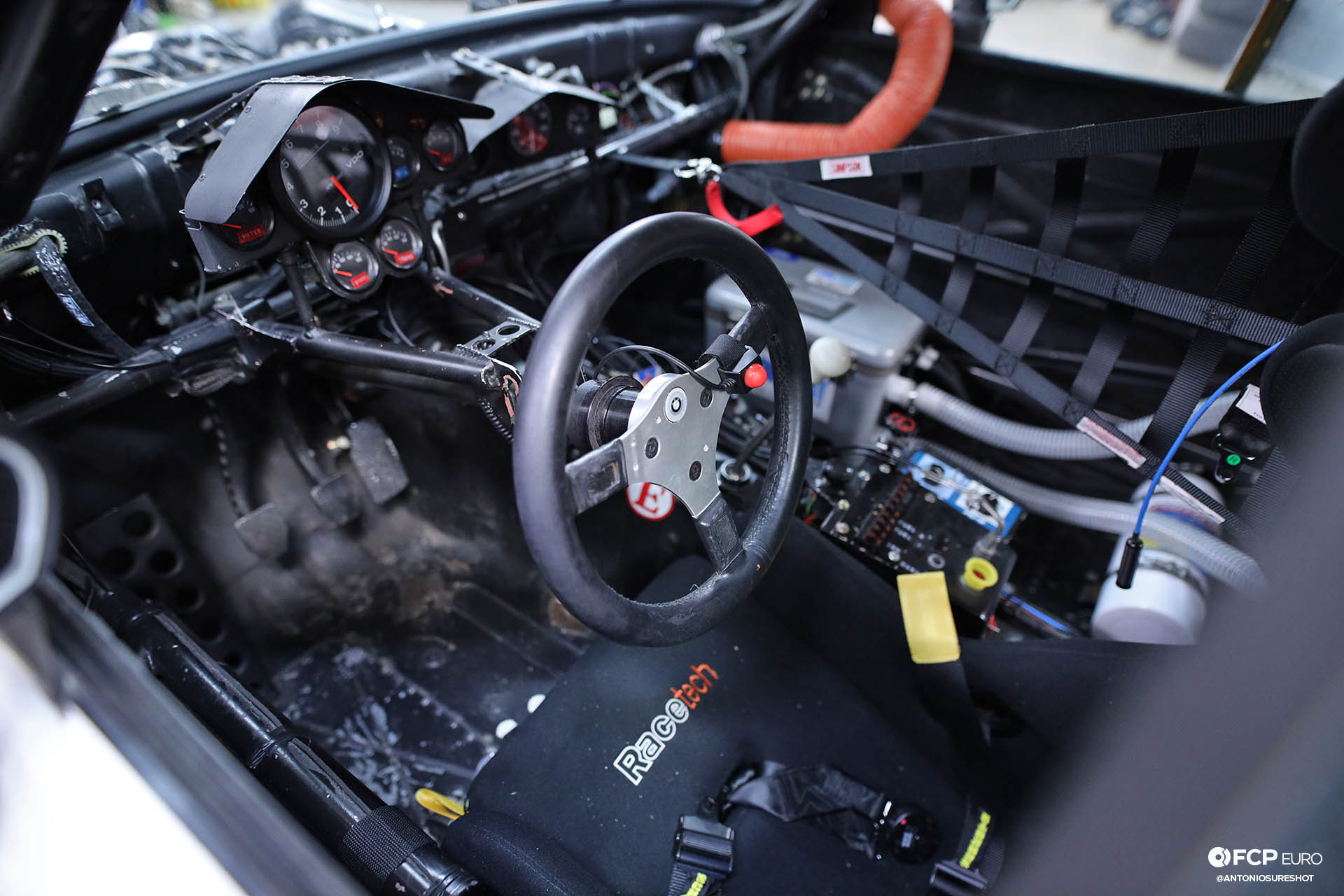
Since this E21 still turns laps at exhibition events like the annual Rolex Monterey Motorsports Reunion, the safety features were brought up to modern specifications. A Racetech bucket seat and a six-point Schroth harness secure the driver firmly behind the wheel, while Simpson netting provides an additional barrier of protection.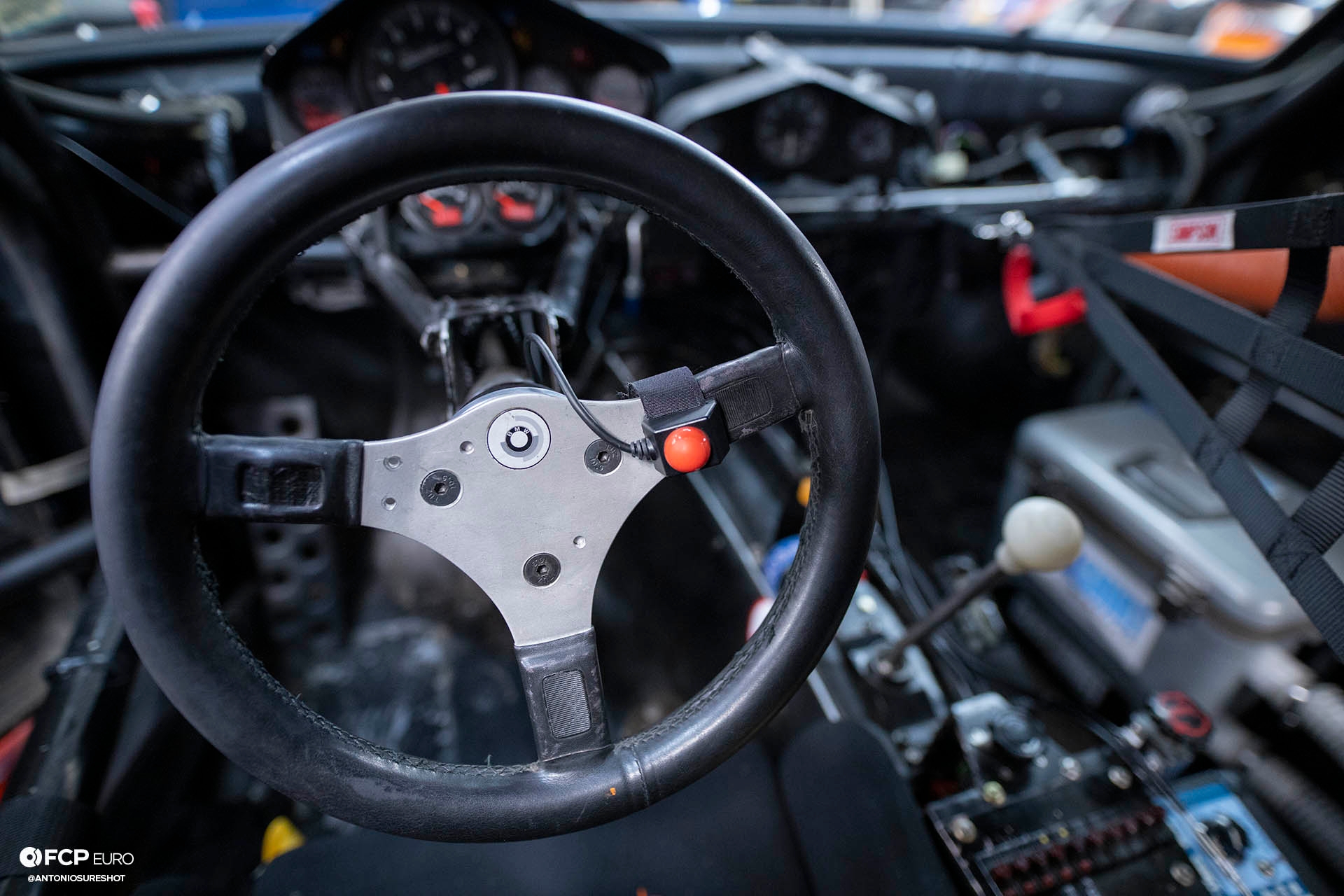
The leather-wrapped, three-spoke BMW Motorsport steering wheel continues to deliver steering input to the front wheels.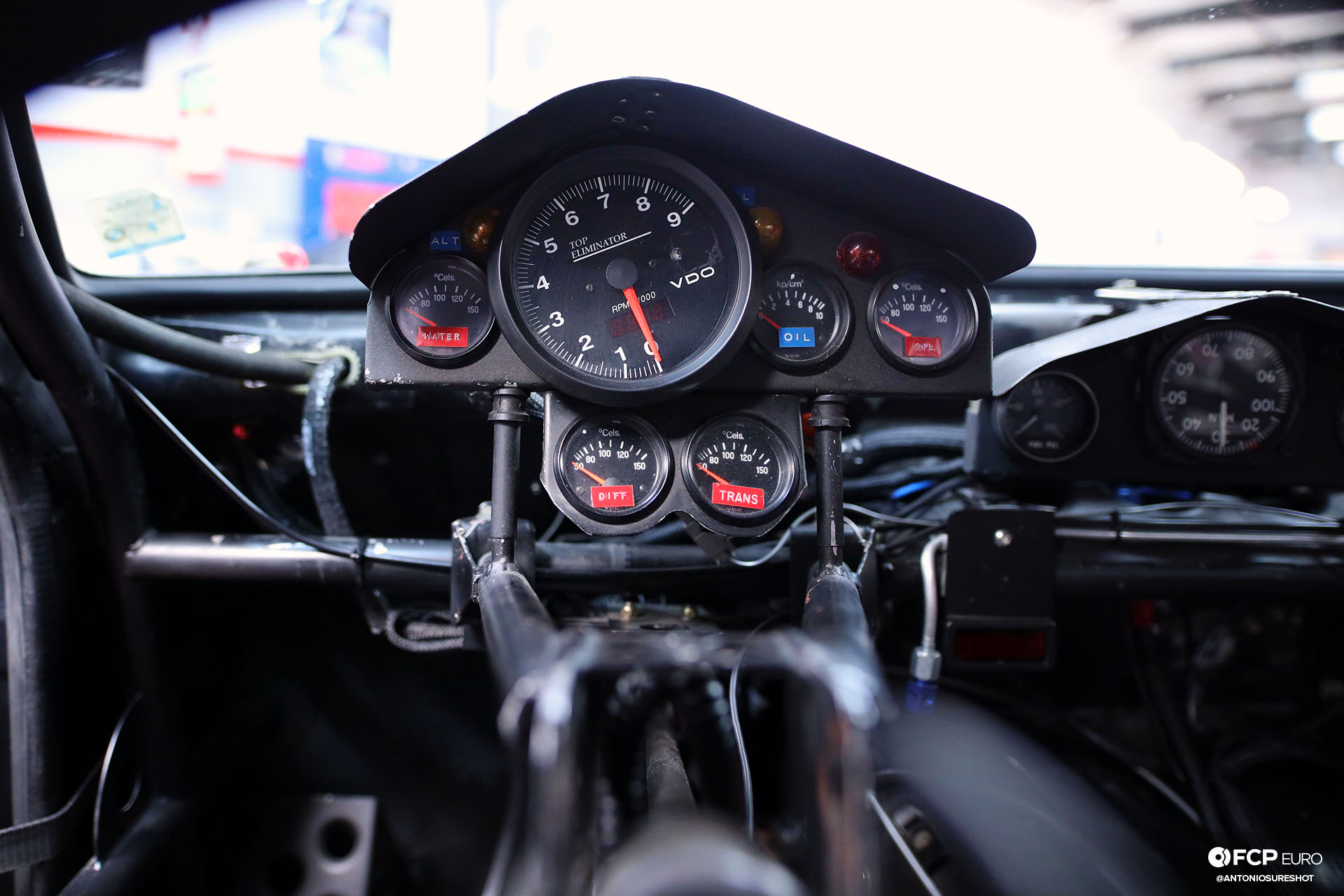
A custom gauge cluster centers on a VDO tachometer flanked by an oil pressure gauge and a quartet of temperature gauges that report water, oil, differential, and transmission fluid temperatures.
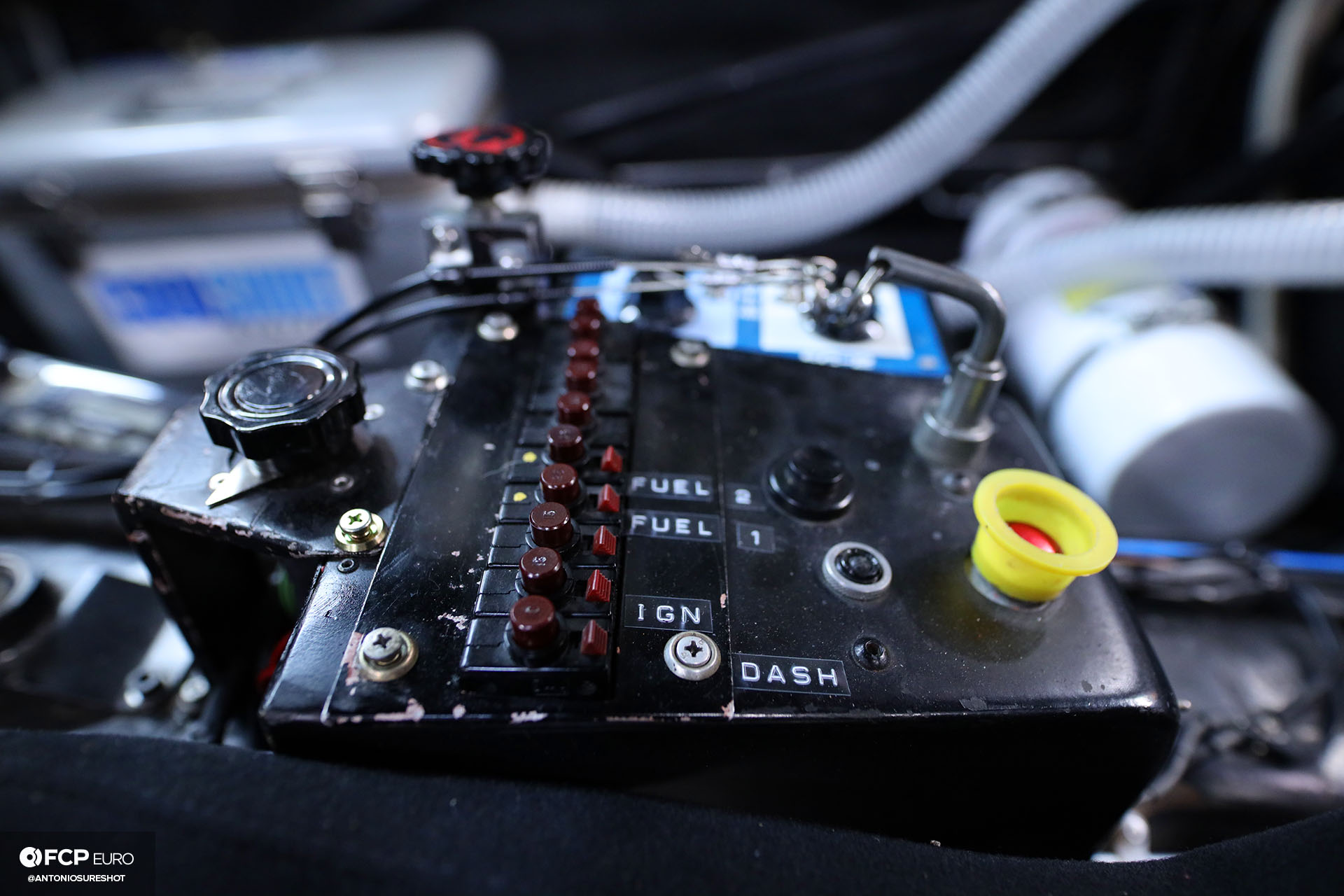
Next to the driver’s right hip behind the shifter sits a circuit breaker panel with a manual boost control knob.
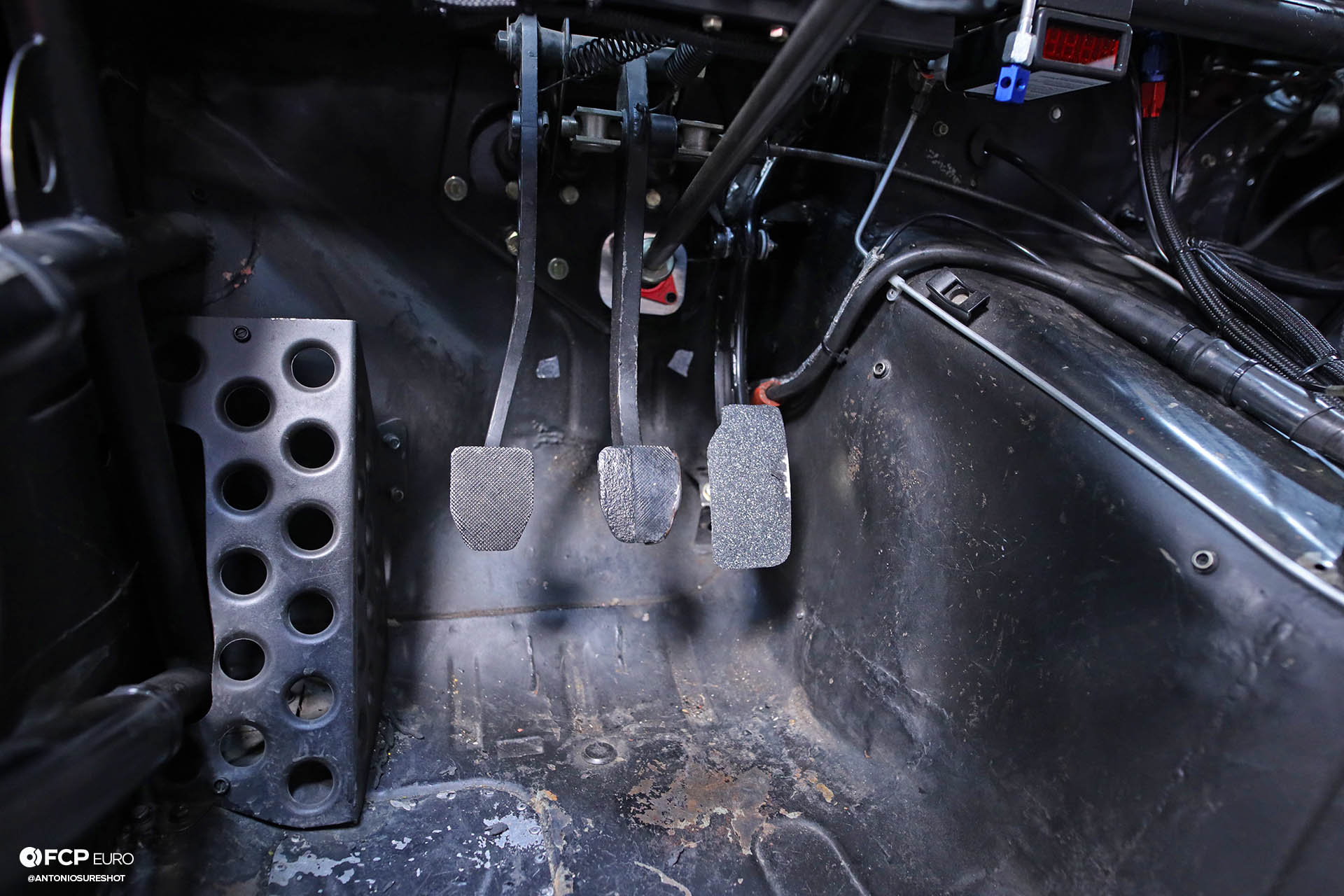
The pedals are located fairly close together to facilitate heel-toe shifting as well as trail braking. A dimple die dead pedal bolts to the floor, left of the clutch pedal.
{{cta('bbfabc8c-4a7d-4acf-b9b2-18b88fe9fb83','justifycenter')}}
This E21 features BMW Motorsport livery and incorporates wide fiberglass fenders along with aggressive aerodynamics to maintain downforce over all four tires.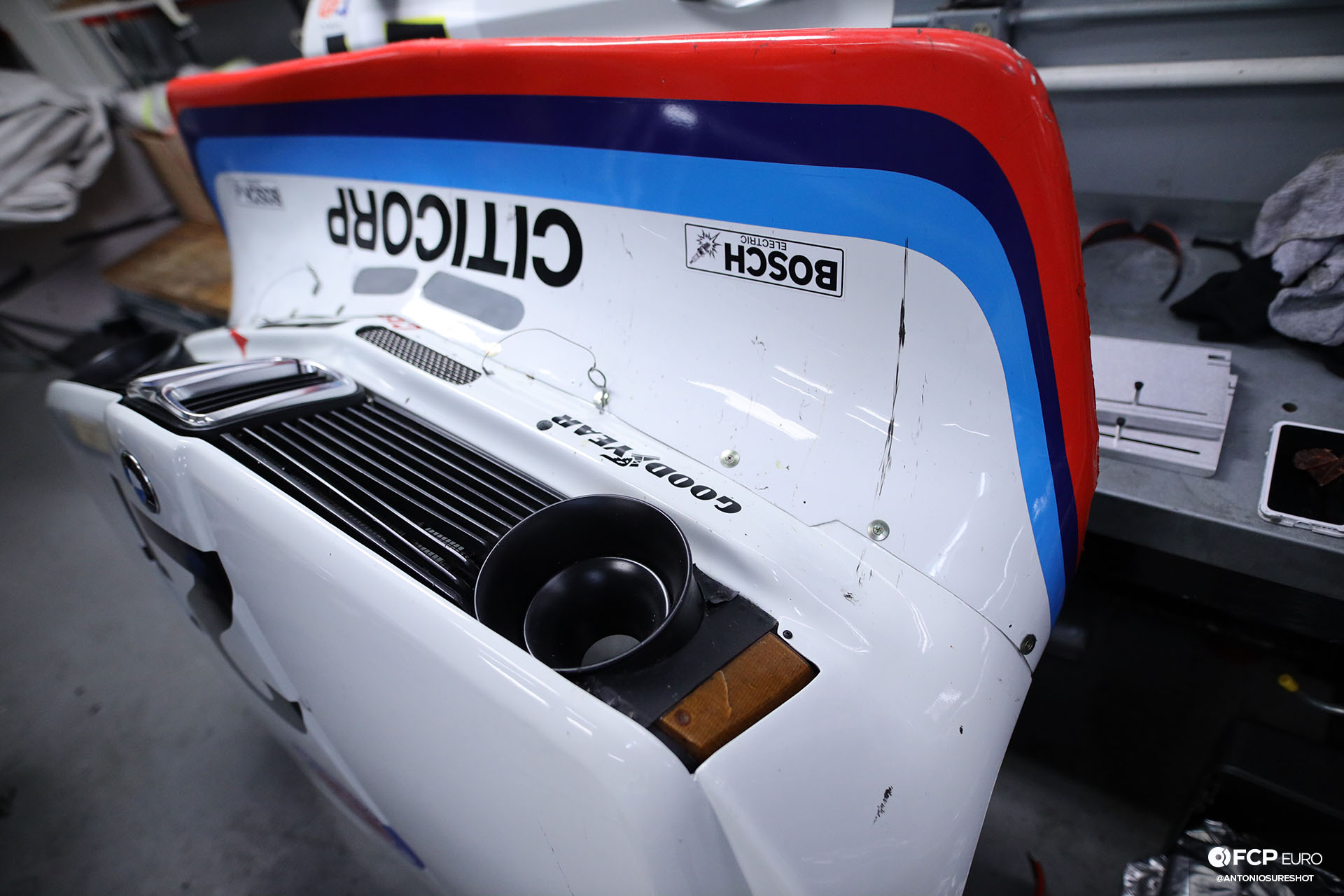
As part of the weight reduction strategy, the factory sheet metal up front was replaced with a one-piece fiberglass front end. The headlights were removed and now supply cool air for the front brake ducts. The modular lip spoiler can be swapped with other spoilers of varying design to add or reduce the amount of downforce over the front tires.

Without the crash beam or much of the apron left in the engine bay, a latticework of steel bars form the framework to provide support for the one-piece fiberglass front end. The steel bars also frame the massive front-mount intercooler. Aluminum panels shroud the intercooler to ensure optimal airflow through the core. Notice the spherical bearing linkage at the bottom of the shroud? This permits adjustment of the lip spoiler support bar depending on the lip spoiler being used.
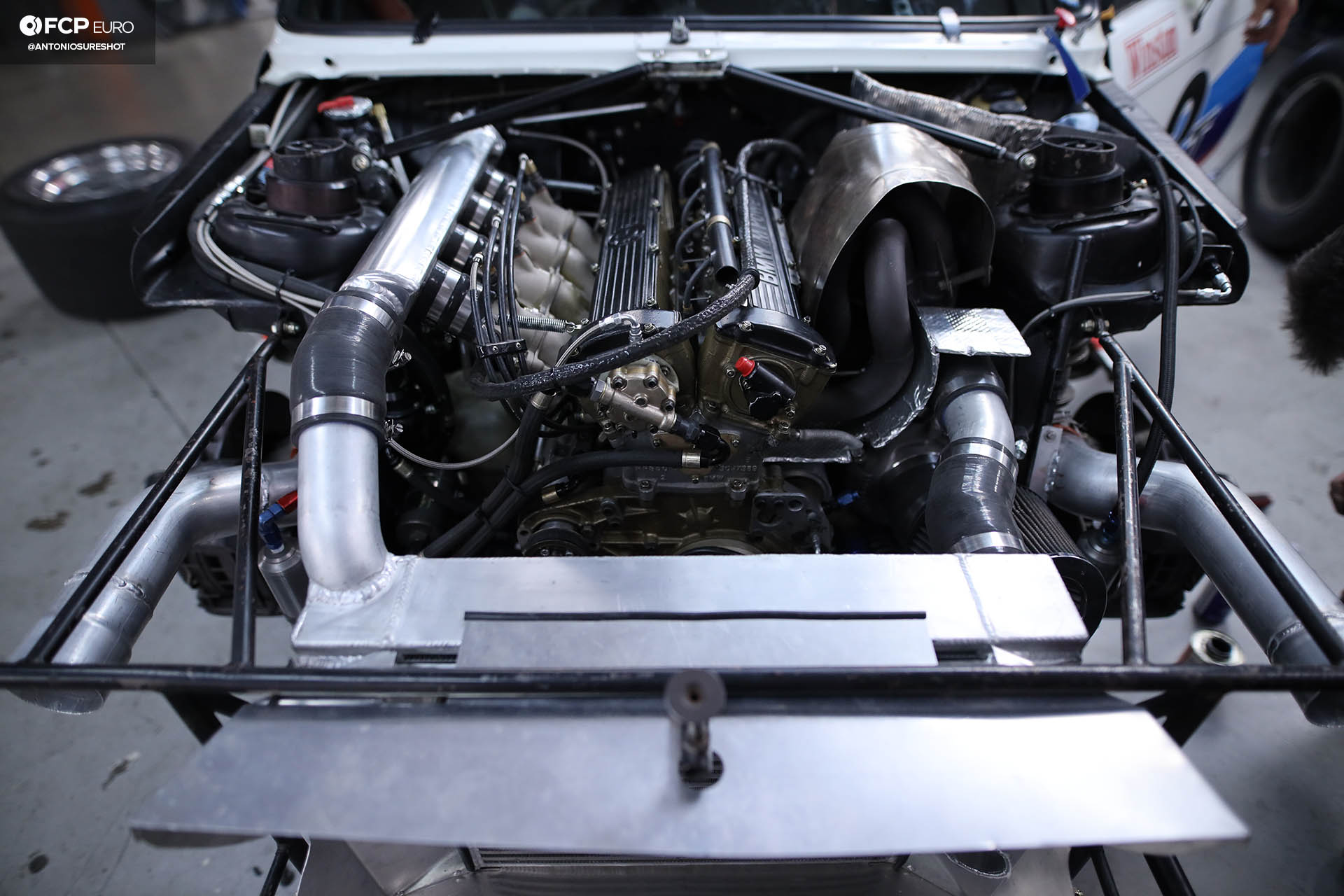
The dual overhead cam M12-engine features a cross-flow cylinder head design. The pressurized intake charge generated by the turbocharger flows through the intercooler before being channeled through a plenum for distribution to the individual throttle bodies. Fuel injectors spray atomized fuel just aft of the throttle body plates on the way to the combustion chambers. Note the oil pump mounted to the intake camshaft - this is a mechanical oil pump that presumably sends oil to the rear of the chassis where the oil cooler core is mounted.
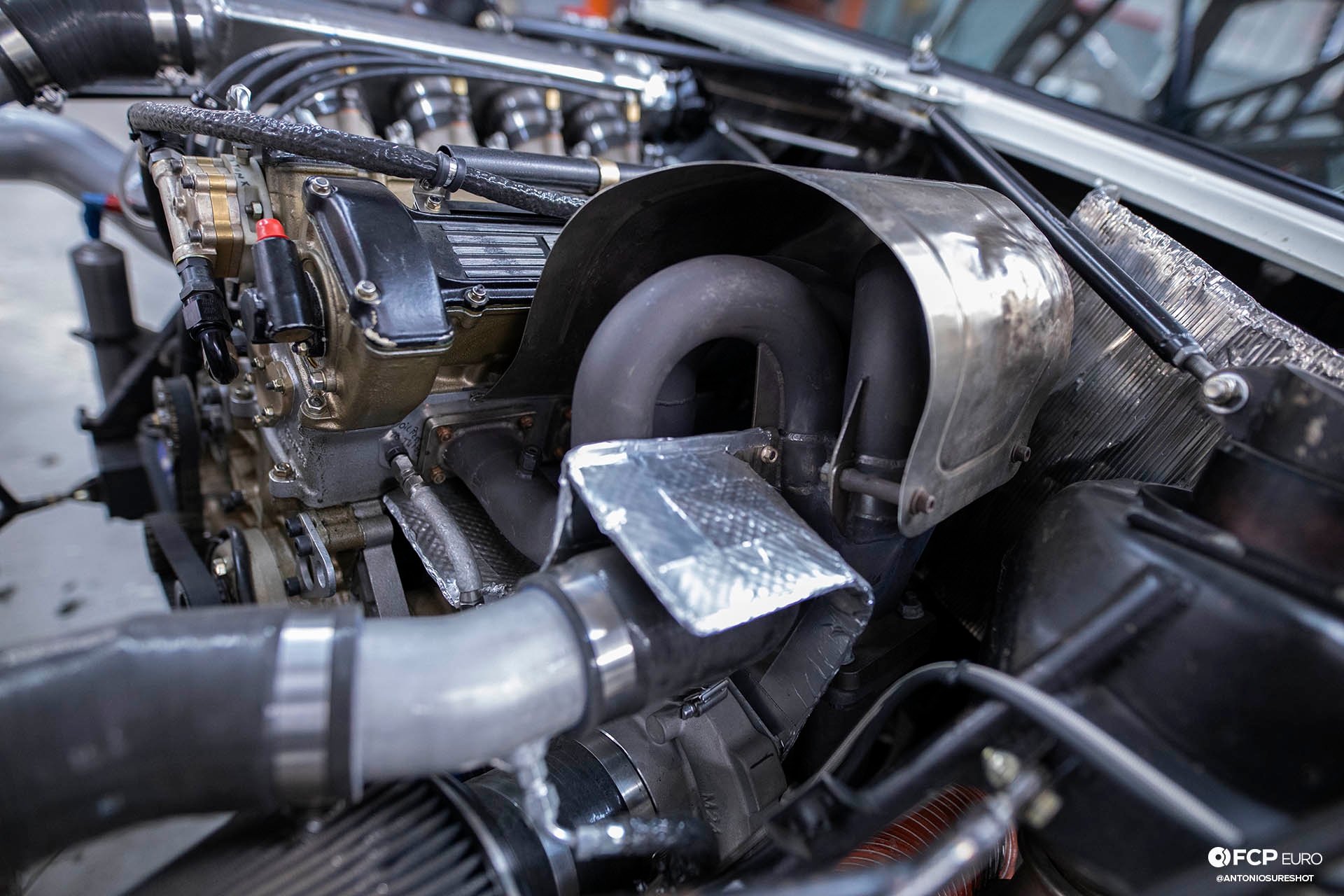
An equal-length exhaust manifold channels high enthalpy exhaust gases into the turbine inlet. Mounting the turbocharger in a low position helps to lower the center of gravity. Sheet metal heat shielding helps with under-hood temperature management.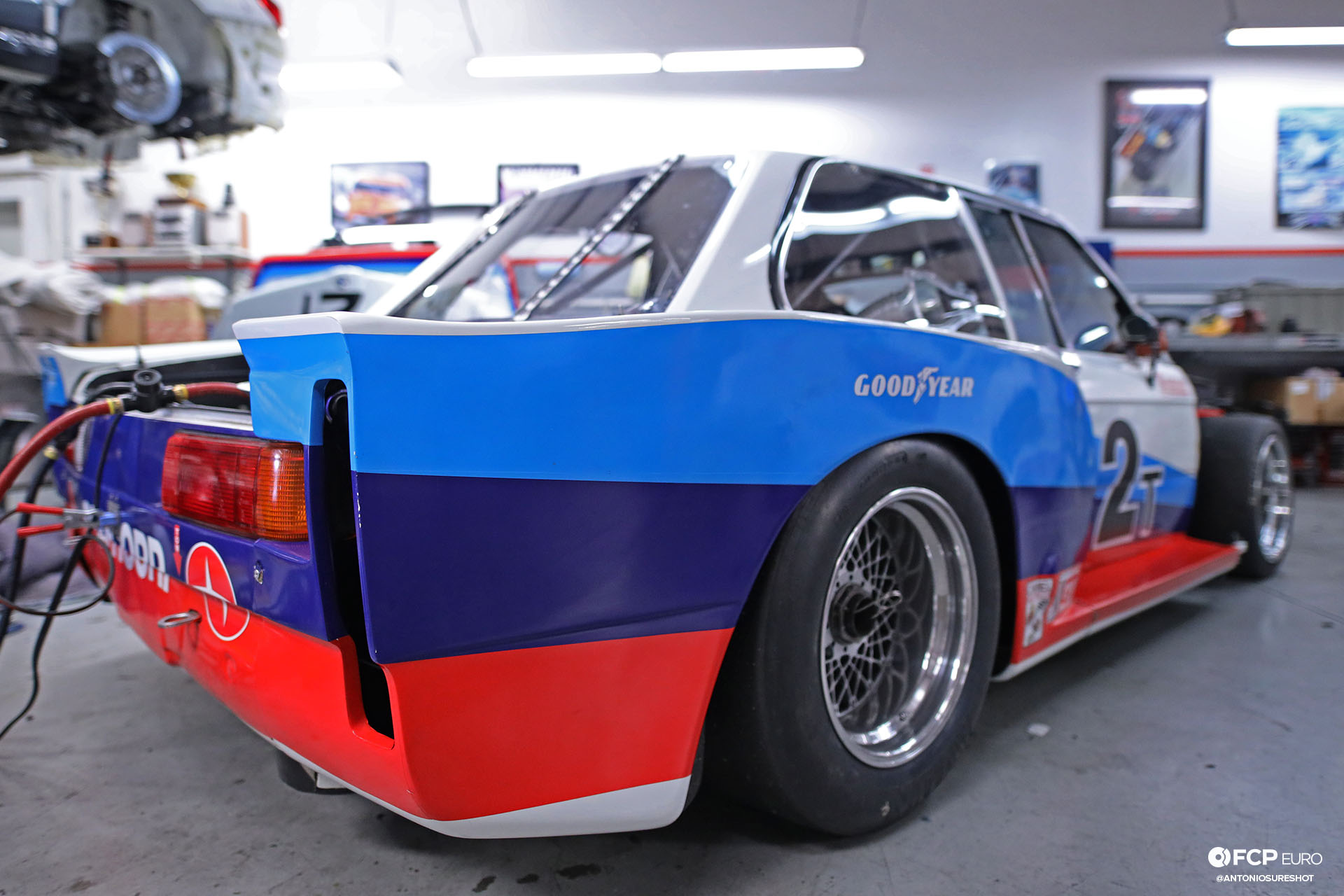
Vented wide fenders serve several important functions. Besides adding several inches to the 320i’s haunches to house the massive rear wheel and tire combination, the coolant and oil heat exchange cores also reside within the fenders. This strategy helps with weight ballast while also utilizing the vents to relieve pressure build-up in the fender for heat exchange. 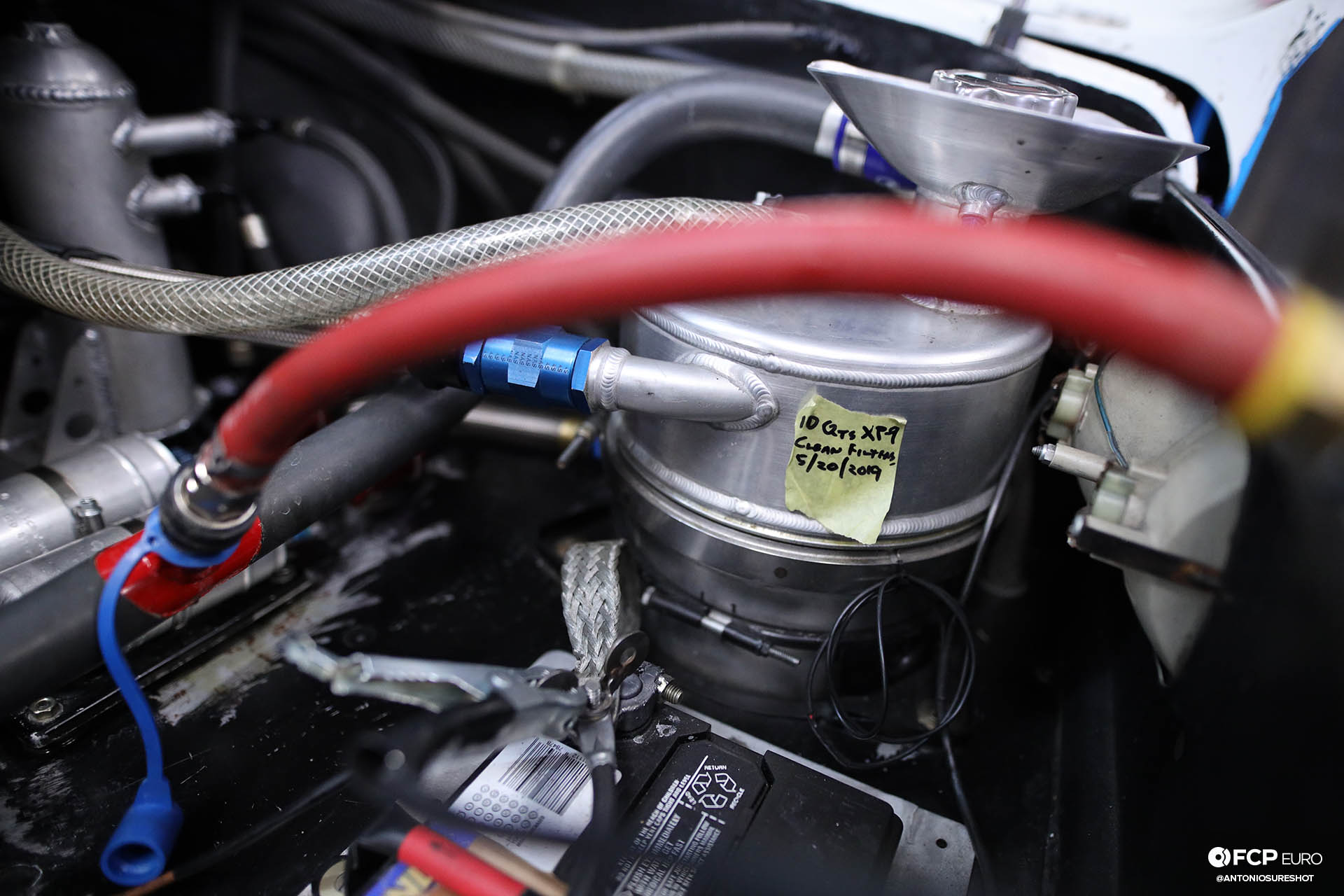
A swirl pot or air/water separator helps to purge bubbles and pockets of air from the coolant passages to ensure optimal heat exchange between the engine and coolant. This is especially important since the coolant must travel to the rear of the chassis where the radiator is located.
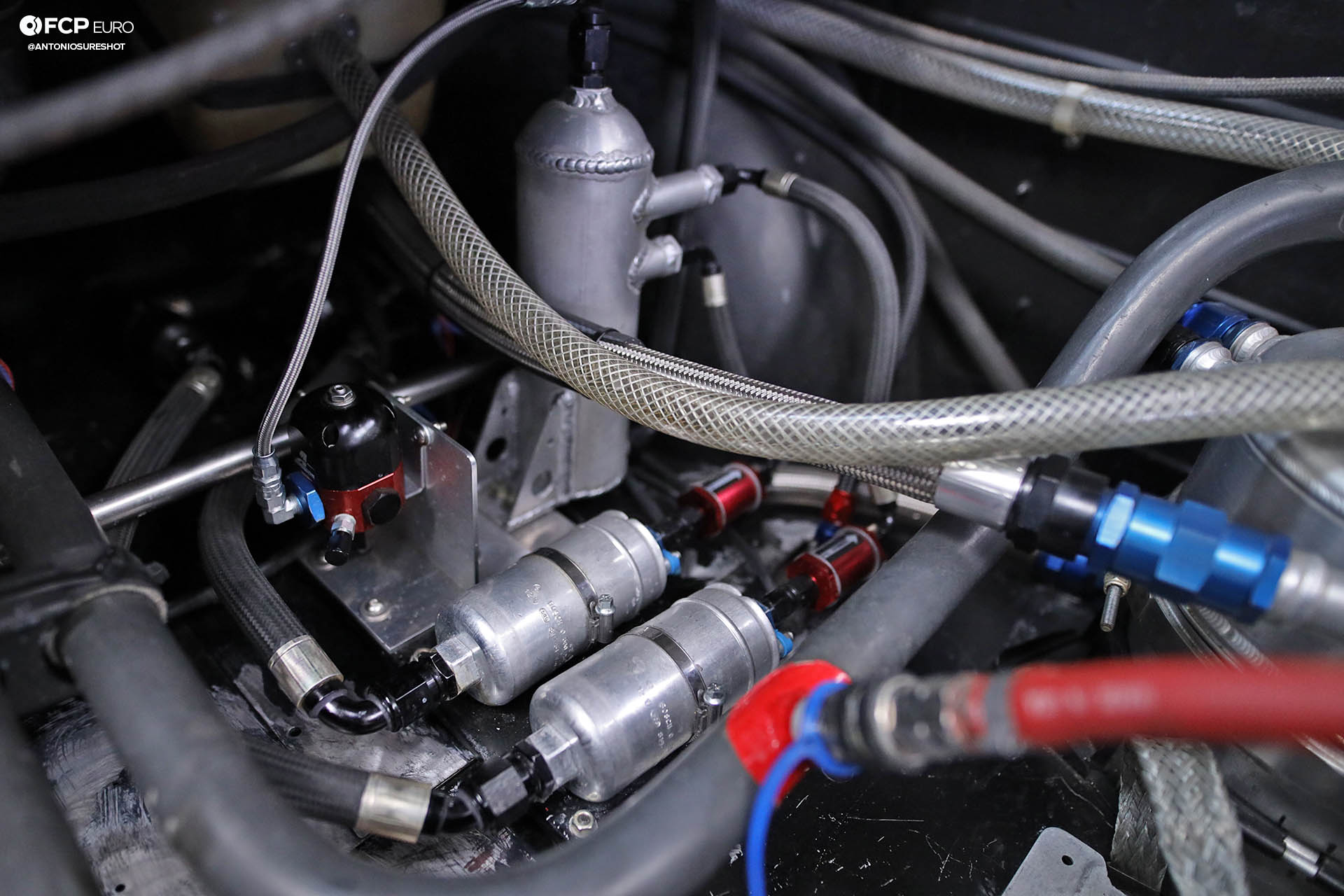
Modern fuel delivery upgrades ensure reliability and consistent performance. Twin Bosch 044 in-line fuel pumps and an Aeromotive fuel pressure regulator keep the thirsty fuel injectors well supplied.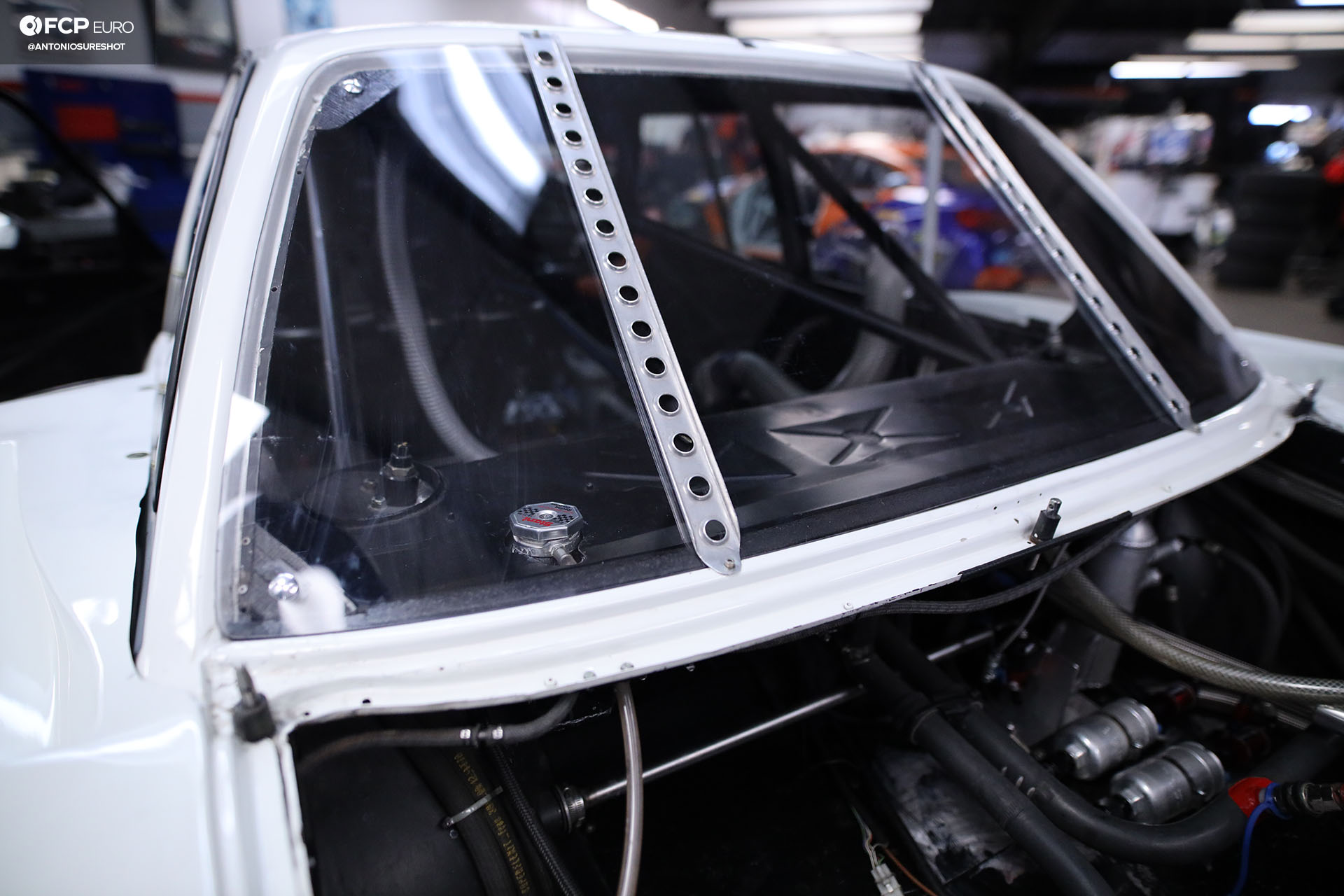
The plexiglass rear window is easily removable and allows access to the rear deck to make adjustments to the shocks and the radiator cap. Two, lightweight, dimple died plates ensure that the window does not separate from the chassis.
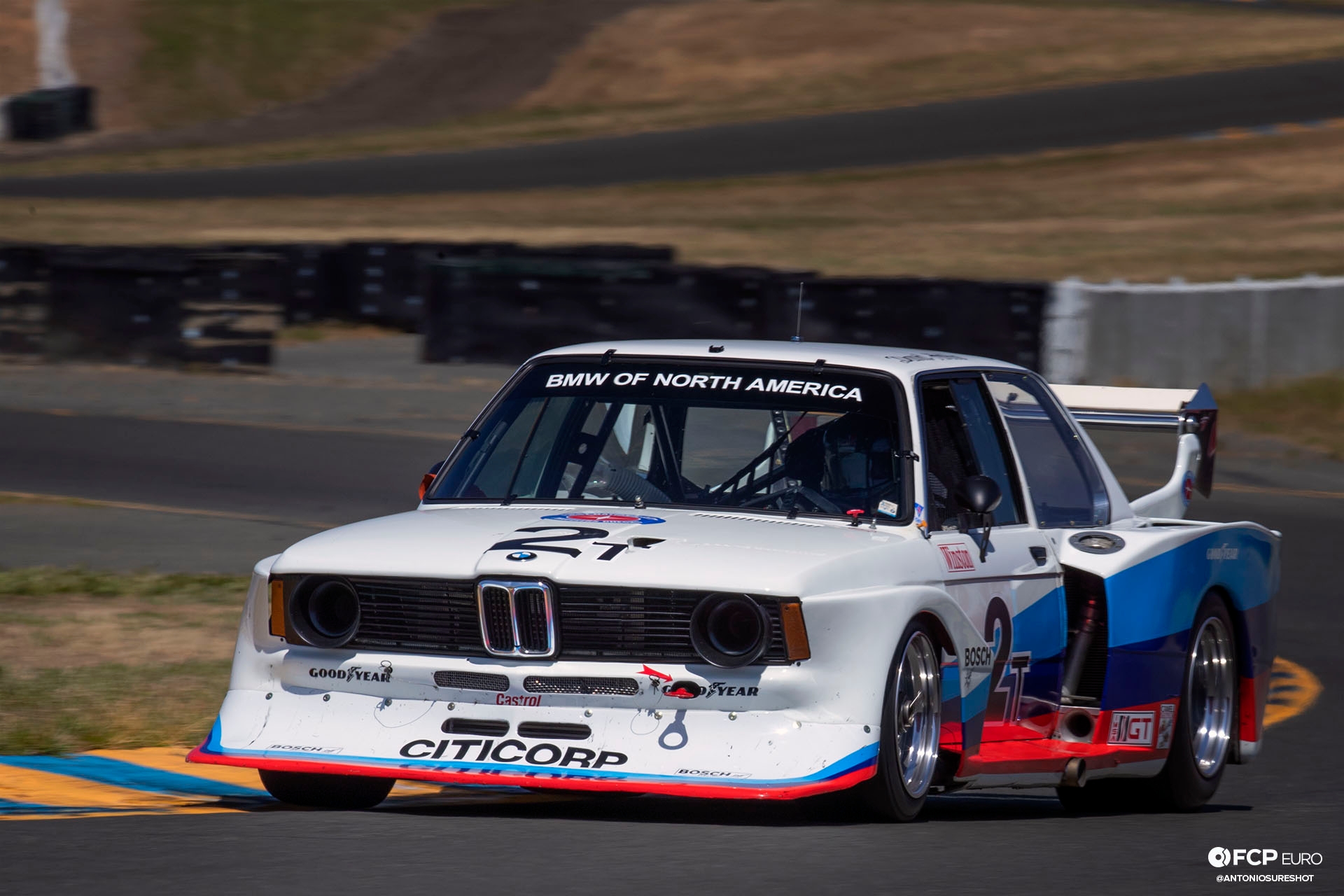
Massive vents behind the door jambs permit fresh, ambient air to travel through the wide fenders to facilitate heat exchange with the oil cooler and radiator. Note the small circular port at the bottom of the vent. This feeds air through a duct that cools the rear brake rotors.
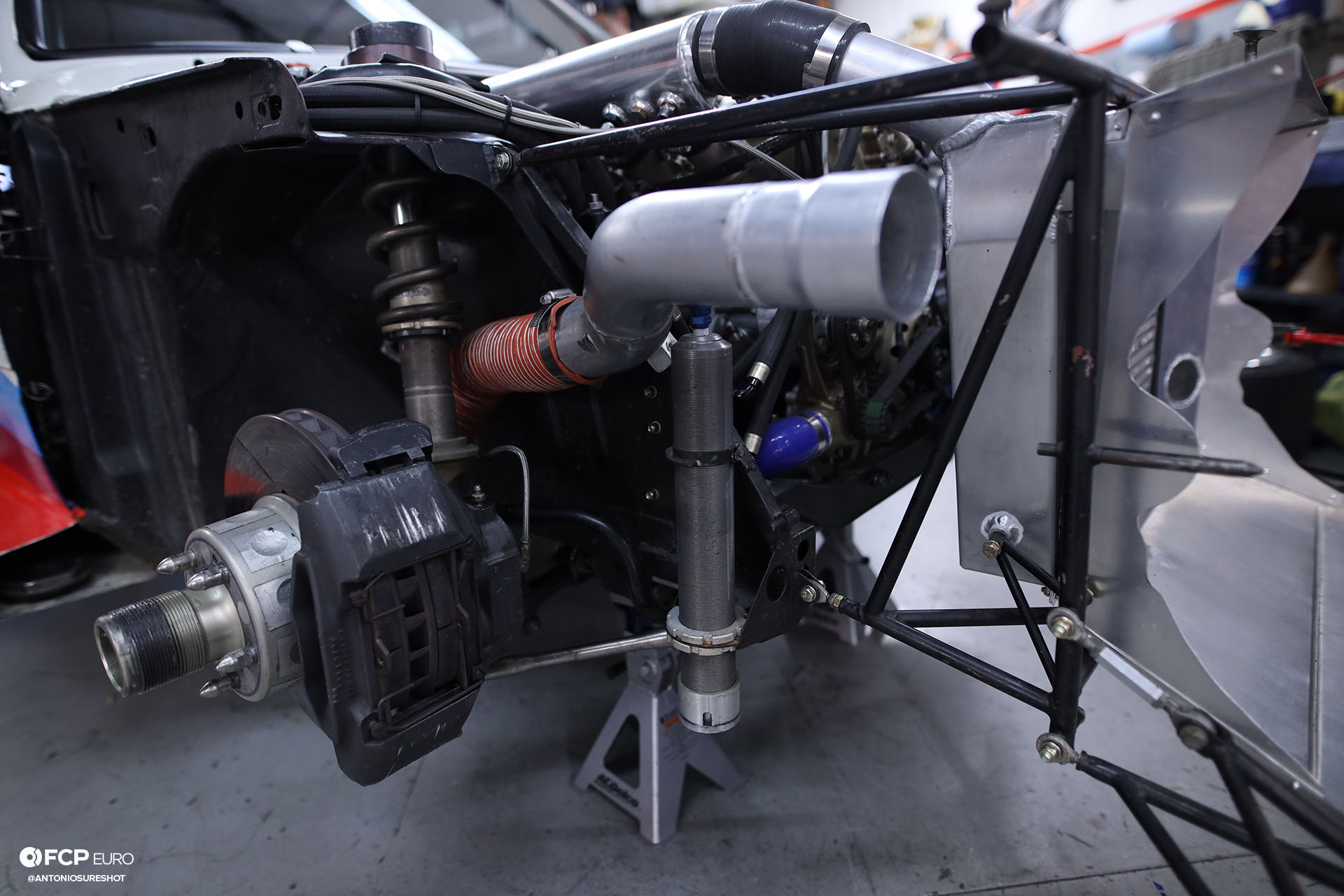
An aggressively offset center-lock hub positions the BBS racing wheels at each corner. Massive vented and slotted brake rotors rely on what appears to be dual-piston sliding brake calipers to reign in the speed.
Aluminum piping feeds cool air from the headlight ports through ducting that cools the brake rotors. Inboard of the front suspension is an air jack that facilitates quick tire changes under racing conditions.
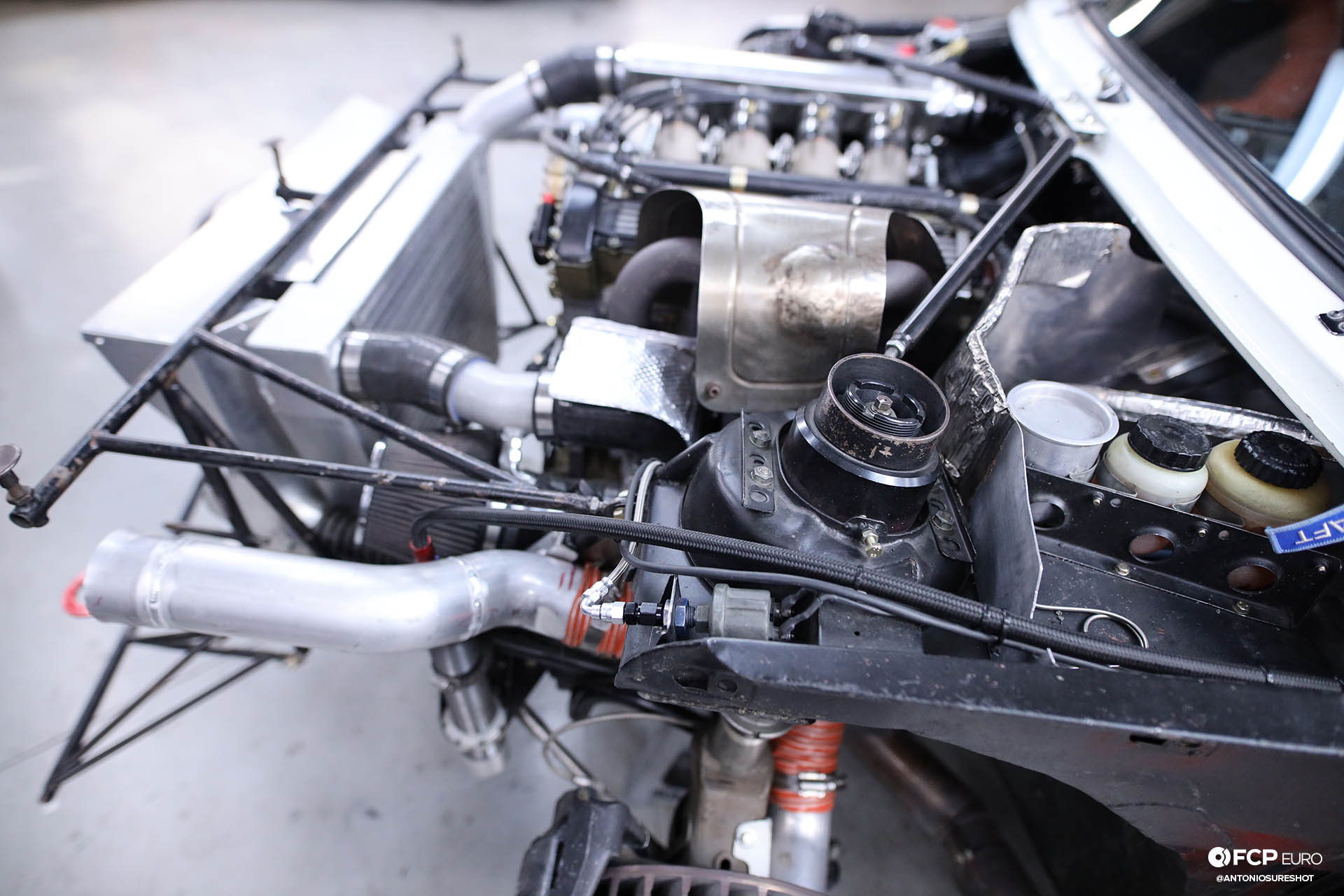
The shock towers usually tie in with the chassis by way of the apron and the frame rails. However, all of the factory sheet metal forward of the shock mounts was removed for weight reduction. Dimple die plates, and adjustable braces join the shock towers to the firewall to mitigate flex. Slots cut into the shock tower offer camber adjustment for optimal alignment settings.
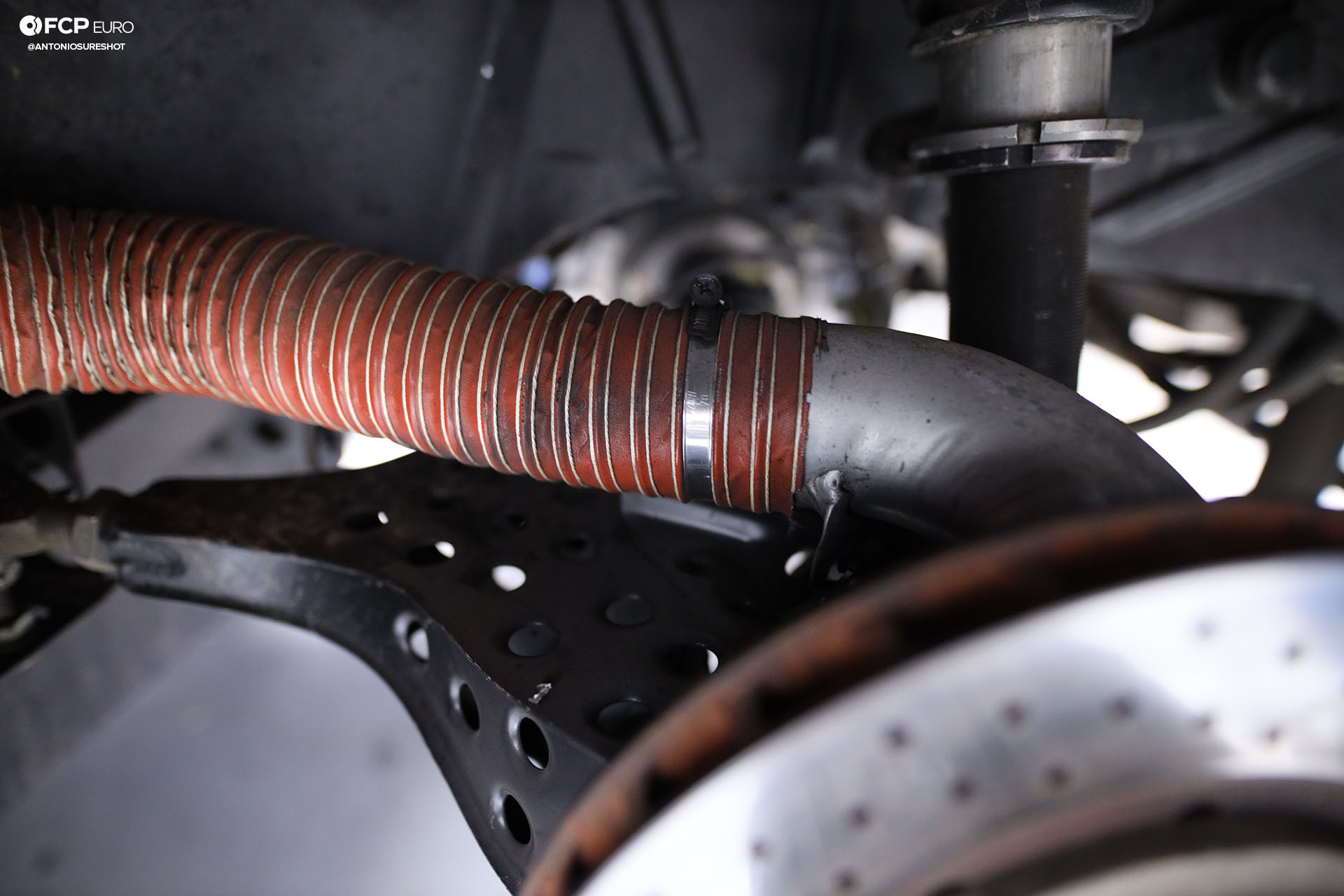
Duct hose feeds cool air through aluminum pipe to the rear brake rotors. For further weight reduction, even the rear suspension arms have been dimple die perforated, reducing weight while maintaining rigidity.
The rear end houses a limited-slip differential that splits power between the wheels. -6AN fluid lines leading to and from the housing join the differential carrier to a heat exchanger to better manage heat generated in the differential.
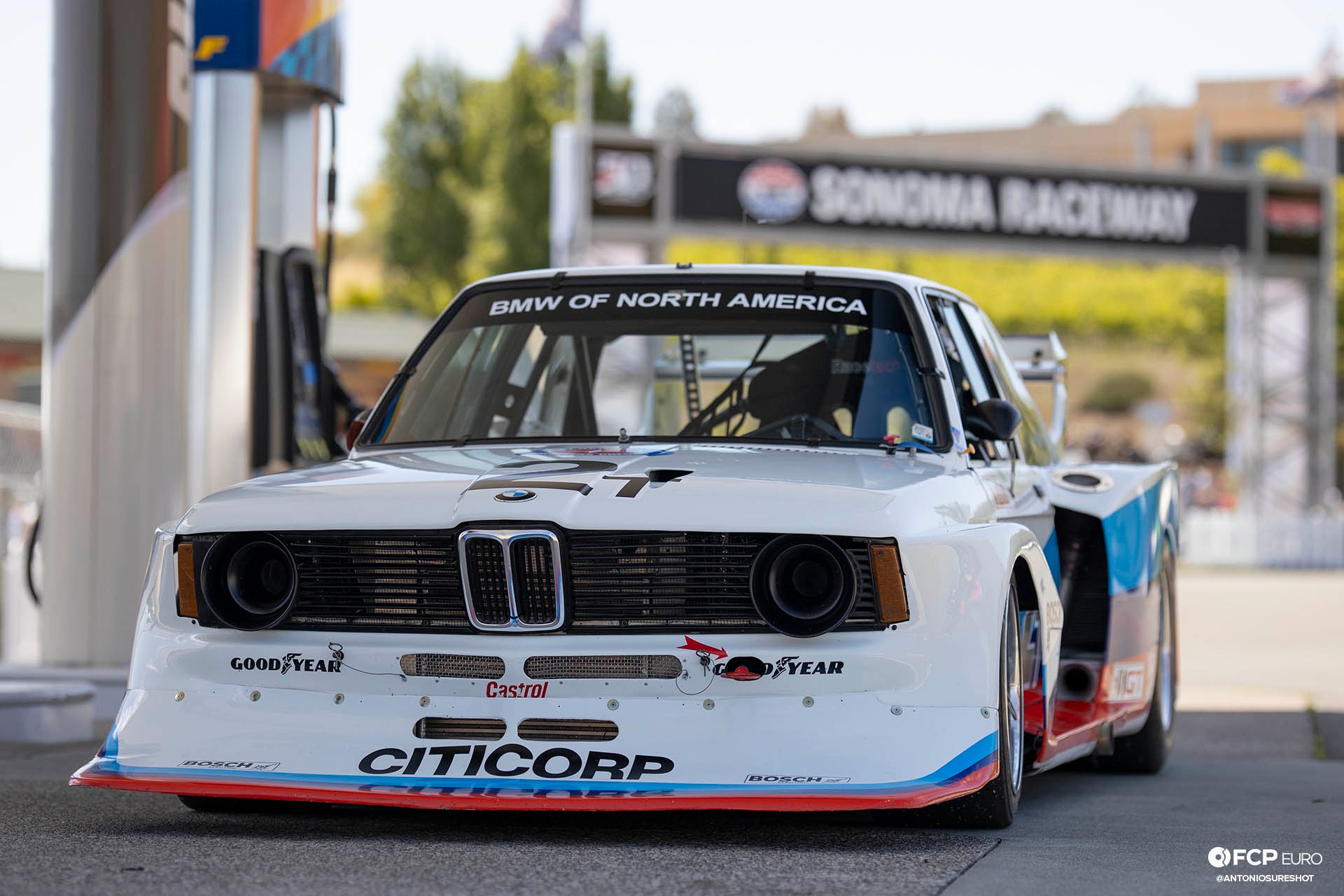
To provide maximum airflow to the massive intercooler, slots were cut into the front end below the grill. Just to show how tall the intercooler really is, slots were also cut into the lip spoiler as well.

The vertical slot vents in the wide fenders release pressure built up by the massive rear tires while also offering a path for heat exchanged with the radiator, oil cooler, differential cooler, and transmission cooler.

IMSA Tested, F1 Approved
After taking the top spot in its second race, chassis #003 finished second at Mid Ohio and twenty-fourth place at Road Atlanta. Between 1978 and 1979, BMW Motorsport and McLaren claimed eight podium finishes in the IMSA series with Hobbs at the wheel of this flyweight flyer. Just four years later, McLaren’s development of the M12 engine proved a success as the BMW Brabham BT52 piloted by Nelson Piquet captured the 1983 Formula 1 World Championship. Although Formula 1 typically pioneers technology for the rest the automotive space, BMW and McLaren developed a championship-winning engine on IMSA’s playground.
Story by Richard Fong
Photos by Antonio Alvendia
If you like this BMW E21, you can find additional BMW-related content at bmw.fcpeuro.com, as well as more build features like this one, here. If there's anything specific you would like to see, or if you have any questions/comments, leave them in the comments section below.


